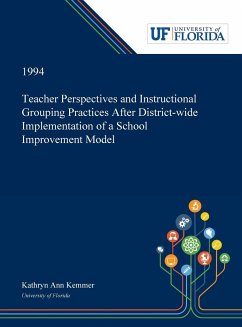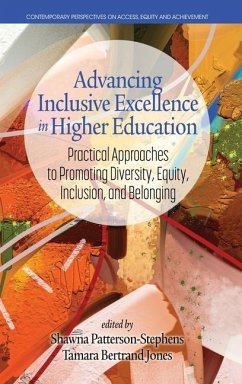
Mindfulness & Wide-Awakeness in Higher Education
Versandkostenfrei!
Versandfertig in 1-2 Wochen
48,99 €
inkl. MwSt.
Weitere Ausgaben:

PAYBACK Punkte
24 °P sammeln!
How can we support our college students cultivating wide-awakeness, or a way of paying attention and being fully present to oneself and the world? How might we use mindfulness practices to help ourselves and our students become more wide awake, realize our interconnectedness, see what is possible, and transform our lives and the world around us? Educational philosopher Maxine Greene called for the need to intentionally promote wide-awakeness, which includes deepening our awareness, asking critical questions, recognizing that alternatives exist, and finding the agency to make changes personally...
How can we support our college students cultivating wide-awakeness, or a way of paying attention and being fully present to oneself and the world? How might we use mindfulness practices to help ourselves and our students become more wide awake, realize our interconnectedness, see what is possible, and transform our lives and the world around us? Educational philosopher Maxine Greene called for the need to intentionally promote wide-awakeness, which includes deepening our awareness, asking critical questions, recognizing that alternatives exist, and finding the agency to make changes personally and collectively. Mindfulness & Wide-Awakeness in Higher Education draws upon Greene's work to explore the voices and experiences of college students who engaged in mindfulness practices during every class session in a cohort over an academic year and others who participated in a mindfulness group that met weekly for a year. The book explores how students used mindfulness to support their academic success, create a culture of connectedness, promote increased empathy, and fuel their sense of agency regarding social interactions and teaching the practices to others. In particular, the voices of students of color who chose to participate in the weekly mindfulness group are elevated and honored. A culminating chapter provides numerous examples of the mindfulness practices taught throughout the two-year study, serving as an accessible guide for higher education professionals interested in doing this work who would like ideas for where to begin or how to further develop their teaching and student support services. Overall, the book provides rich insights and practical approaches for how higher education faculty and staff can work together with students so we can all become more wide-awake to what is possible in our hearts, in our classrooms, on our campuses, and beyond.














